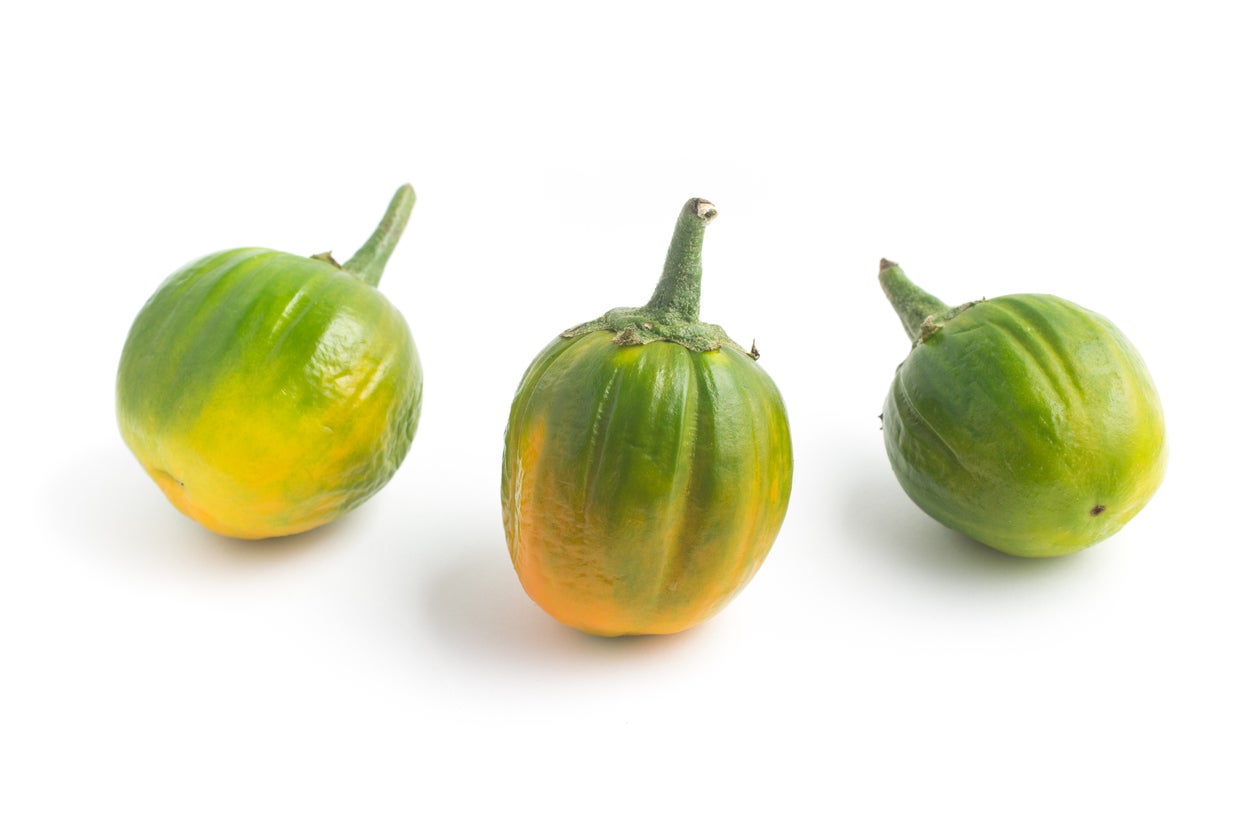Jilo Eggplant Info: How To Grow A Jilo Brazilian Eggplant

Jilo Brazilian eggplant produces small, vibrant red fruit and, as the name suggests, is widely grown in Brazil, but Brazilians aren’t the only ones growing jilo eggplants. Read on for more jilo eggplant info.
What is a Jilo Eggplant?
Jilo is a green fruit related to both the tomato and the eggplant. Once treated as a distinct species, Solanum gilo, it is now known to be of the group Solanum aethiopicum.
This deciduous shrub in the family Solanaceae has a highly branching habit and grows up to 6 ½ feet (2 m.) in height. Leaves are alternate with smooth or lobed margins and can get up to a foot (31 cm.) long. The plant produces cluster of white blooms that develop into egg or spindle-shaped fruit that, at maturity, are orange to red and either smooth or grooved.
Jilo Eggplant Info
Jilo Brazilian eggplant goes by a myriad of names: African eggplant, scarlet eggplant, bitter tomato, mock tomato, garden egg, and Ethiopian nightshade.
Jilo, or gilo, eggplant is commonly found throughout Africa from southern Senegal to Nigeria, Central Africa to eastern Africa, and into Angola, Zimbabwe, and Mozambique. It likely resulted from the domestication of S. anguivi frica.
In the late 1500’s, the fruit was introduced via British traders who imported it from the coast of West Africa. For a time, it attained some popularity and was referred to as “guinea squash.” The small fruit, about the size (and color) of a hen’s egg, was soon dubbed “egg plant.”
It is eaten as a vegetable but is actually a fruit. It is harvested when it is still a bright green and pan fried or, when red and ripe, it’s eaten fresh or pureed into juice much like a tomato.
Gardening tips, videos, info and more delivered right to your inbox!
Sign up for the Gardening Know How newsletter today and receive a free copy of our e-book "How to Grow Delicious Tomatoes".
Jilo Eggplant Care
As a general rule, all types of African eggplant thrive in full sun with well-draining soil and a pH of 5.5 and 5.8. Gilo eggplant grows best when daytime temps are between 75 and 95 degrees F. (25-35 C.).
Seeds can be collected from fully ripe fruit and then allowed to dry in a cool, dark area. When dry, plant the seeds indoors. Sow seeds 6 inches (15 cm.) apart in rows spaced 8 inches (20 cm.) apart. When the seedlings have five to seven leaves, harden the plants off in preparation for transplanting outside.
When growing jilo eggplant, space the transplants 20 inches (50 cm.) apart in rows that are spaced 30 inches (75 cm.) apart. Stake and tie the plants just as you would a tomato plant.
Jilo eggplant care is fairly easy once the plants have established. Keep them moist but not sodden. An addition of well-rotted manure or compost will improve yields.
Harvest the fruit in about 100 to 120 days from planting and pick on a regular basis to encourage additional production.

Amy Grant has been gardening for 30 years and writing for 15. A professional chef and caterer, Amy's area of expertise is culinary gardening.
-
 Looking For Plants To Give You The Soft And Fuzzies? Try These 5 Fuzzy Leaf Plant Options
Looking For Plants To Give You The Soft And Fuzzies? Try These 5 Fuzzy Leaf Plant OptionsLovers of texture, drama, silver foliage and tactile plants will adore these special sensory garden additions. These fuzzy leaf plant options will leave you all aglow
By Susan Albert
-
 Get Ready For A Summer Of Hummers! Grow These Full Sun Hummingbird Plants and Flowers
Get Ready For A Summer Of Hummers! Grow These Full Sun Hummingbird Plants and FlowersIf you’re lucky enough to enjoy a sunny backyard, make sure you are maxing out on your pollinator opportunities and grow these full sun hummingbird plants and flowers
By Tonya Barnett